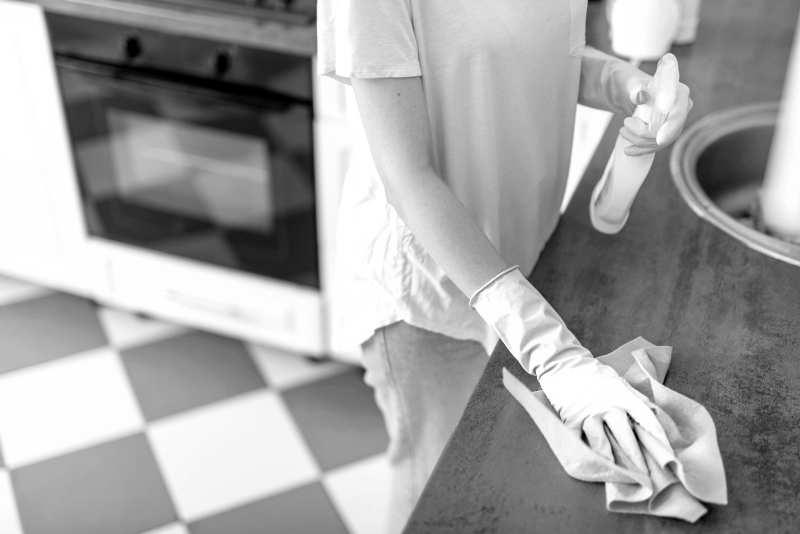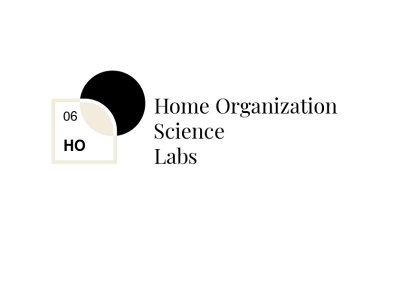You probably do a lot to keep your house clean, from washing clothes to garbage disposal. These activities are an integral part of your life, enhancing your home’s cleanliness and comfort. Cleaning is also important for keeping your environment healthy.
However, have you ever thought about how the chemicals in different cleaning agents may impact your surroundings? After all, the majority of traditional cleaning products damage the ecology.
Therefore, this article will teach you the dangers of excessive chemical use in house cleaning, as well as solutions to overcome them. You’ll learn how to use affordable, eco-friendly cleaning methods like DIY green cleaning to keep your home clean while protecting the environment.
Cleaning your house to keep it livable for your comfort and health is important. However, don’t forget the environment around where your house stands. Start building your awareness of the environmental conditions around you by improving your cleaning practices.
Understanding the need for eco-friendly cleaning
You may ask yourself: Why should you adopt eco-friendly cleaning methods? Why switch to eco-friendly cleaning products?
Around 75% of Volatile Organic Compounds (VOCs) are transmitted through the use of household cleaning agents. These can be:
- Detergents
- Bleach products
- Disinfectant wipes
- Dish soaps and more
They are likely to contain chloroform, carbon tetrachloride, hexaldehyde, and 1,4-dioxane. The emission of these compounds potentially increase indoor air pollution, causing asthma and other respiratory health problems in the long run.
Poisonous substances from cleaning products also pollute nearby water sources. They cause algal blooms that deplete oxygen and damage aquatic ecosystems. Processing household waste, including detergents and food remains, incorrectly also pollutes land and groundwater. All these pose a serious threat to environmental health.
Thus, transitioning to eco-friendly cleaners reduces indoor air pollution, protects aquatic ecosystems, and maintains cleaning effectiveness. These sustainable practices benefit the environment, your health, and your future.
The benefits of adopting sustainable cleaning practices
Before exploring the benefits, it’s important to recognize the challenges that can discourage people from adopting sustainable practices. Also, this article will gradually teach you how to overcome these obstacles.
Safeguards the environment
Reusing organic waste, such as fruit and vegetable peels, scraps, and coffee grounds, helps reduce waste. These materials can be processed into eco-cleaners like eco-enzyme.
Eco-enzyme can be used to clear drains, clean floors, and make organic disinfectants. This process reduces tons of waste that would otherwise be sent to landfill sites.
Read more: Eco-enzyme: An Organic Liquid That Has Many Benefits
Promotes long-term health benefits
Another major reason to embrace eco-friendly cleaning is that it offers health benefits. Eco-cleaning supplies are non-toxic and have fewer harmful chemicals that can trigger respiratory problems, skin irritations, or allergies. It ensures that the air within your home is clean and without fumes.
Effective cleaning reduces infection risks from surfaces, pets, and air, keeping your family safe. It involves using nontoxic cleaning agents, minimizing waste, and removing contaminants.
Saving your money
Aside from health and environmental benefits, you can also save money by creating your own cleaning products. You can utilize any local ingredients or reuse organic waste around your home to make a DIY solution. Thus, you can reduce your expenses by not buying traditional cleaning supplies in the market.
Best practices to start green cleaning practices
To get started on the path of green and sustainable cleaning at home, try some of these tips. These will help you create your green eco-cleaners and teach you important waste management practices.
Substituting traditional cleaning products with eco-friendly alternatives
Switching to eco-friendly alternatives from traditional cleaning products makes a difference to the environment and further enhances the indoor air quality of your home. You can follow some DIY tips for making your green eco cleaners to start this practice.
All-purpose cleaners
This cleaner works great and is versatile for most surfaces. It is budget-friendly and eco-friendly. You won’t spend much on materials to make different cleaners. This cleaner is all-purpose and only requires orange peels, vinegar, and water. All you need to do is:
- Fill a clean, empty spray bottle with vinegar in a 1:1 ratio to water;
- Add orange peels to the mixture
- Let it sit for a couple of days so that infusion can take place.
Now, this mixture is ready to be used for cleaning sinks, microwaves, stovetops, and other surfaces.
Green dishwashing solutions
Avoid the use of toxic chemicals when washing dishes, and focus on nontoxic, biodegradable cleaning products. For the materials, all you need are:
- A cup of liquid castile soap
- A quarter cup of distilled white vinegar
- A tablespoon of washing soda
- Ten drops of essential oil of any desired type
After gathering the materials, you need to pour all the ingredients into a bottle together. Then, it can be used directly like other dishwashing liquids.
Eco-friendly laundry detergents
Washing clothes with environmentally friendly laundry detergent helps protect the environment. It also reduces the chances of skin itching caused by exposure to toxic substances.
To make your own, you only need the following:
- A bar of castile soap grated
- A cup of washing soda
- A cup of baking soda
- Twenty drops of your preferred essential oil
After preparing all these, you can prepare the final product by simply adding the ingredients together in a large bowl. Then, it can be used. You should use at least 2 tablespoons for every single washing cycle.
Natural toilet cleaners
Making a natural toilet bowl cleaner requires vinegar as a potent and safe cleaning agent for removing stains and odors. You can also use this all around your bathroom area, as well.
To clean your bathroom, mix vinegar and warm water in a basin or spray bottle. If you use a plastic spray bottle, remember not to make the water too hot. Wipe all the surfaces with a cloth soaked in the mixture.
If you use a spray bottle, spray the mixture on the surface you want to clean and wipe it with a cloth.
Read more: Green Home: DIY Cleaners for a Fresh and Healthy Space
Using green cleaning tools and materials
Apart from cleaning agents, you can also begin to shift away from traditional, non-eco-friendly cleaning tools. Various green alternatives for your cleaning tools may provide your home with sparkling cleanliness while significantly reducing waste.
- Reusable cleaning cloths. Replace disposable paper towels with reusable cleaning cloths. Unlike disposable towels, you won’t have to keep many around. You also save money because reusable cleaning cloths can be washed and used up to 1,000 times.
- Utilize bamboo cleaning tools. Bamboo is commonly used to make eco-friendly cleaning tools like brooms, dish brushes, and compostable sponges. Using bamboo cleaning tools significantly reduces plastic waste.
- Utilize recycled plastics tools. Opt for cleaning tools made from recycled plastics (i.e. such as broom heads, dustpans, mops, bins, etc.) to reduce emissions and landfill waste by giving household materials a second life.
Reducing chemical use with natural disinfectants
Utilizing natural disinfectants such as vinegar, lemon juice, hydrogen peroxide, and essential oils can be an effective and eco-friendly way to clean your home. Here are the recipes for you to get the most out of the function of these materials:
- Vinegar. This solution’s effectiveness makes it easy to use when washing countertops, sinks, and other parts. Simply spray and then wipe with a microfiber cloth. It can also remove most bad smells.
- Lemon juice. It is good for removing grease, mold, and mildew, and gives the surface a shiny glaze with a nice smell.
- Hydrogen peroxide. Hydrogen peroxide is a very effective disinfectant that can be used on a range of objects in homes, such as kitchen countertops, bathroom fixtures, and glass.
- Essential oils. Oils such as tea tree, lavender, lemon, and eucalyptus can be used to produce clean solutions that are secure from toxic elements and emit a nice scent.
Read more: Homemakers’ Guide to DIY Cleaning Solutions
Sustainable waste management in cleaning
Natural sponges and cloths are biodegradable cleaning materials that can be composted once they reach the end of their service life. To do this right, you can begin with these steps:
- Cut up compostable waste. When sponges and clothes are no longer useful, cut them into smaller pieces to speed up the decomposition process.
- Balance green materials and brown materials. Create a compost heap or a bin in the garden, then alternate layers of green materials and brown materials. The green materials are nitrogen-rich kitchen waste and grass clippings, and the brown are carbon-rich shredded paper, leaves, and chopped cleaning material.
- Turning to give oxygen. Turning the heap over also introduces oxygen into it; it should be moist but not soaking.
- Ready to use. After several months, these composts will break down into dark, crumbly substances and be ready to be used as plant manure.
Another important practice you can embark on is recycling used packaging. Here are some tips for you to try:
- Identify the materials. Identifying recyclable packaging materials such as plastics, cardboard, and some types of paper.
- Remove the residue. Clean out the residue from the packaging to prevent contamination.
- Sort and group. Sort the materials according to the local recycling policy — plastics from paper and cardboard.
- Give to the recycling center. Take or drop it off at a recycling center, or take advantage of curbside pickup if your community has that service available.
Read more: The Critical Role of a Household Sanitation System for Health and Well-Being
In conclusion
While maintaining a clean home is crucial for comfort and health, it’s equally important to consider its environmental impact. Chemicals in traditional cleaning products can harm indoor air quality and water sources, affecting ecosystems and human health.
By adopting eco-friendly cleaning practices and products, such as DIY green cleaners and sustainable waste management, you can protect your health and contribute to environmental sustainability.
Start today by making small changes in your cleaning routine to create a healthier home and planet for everyone.
If you would like to see more resources on cleaning, check out the Home Organization Science Labs. The lab uses the research of the Institute for Life Management Science to produce courses, certifications, podcasts, videos, and other tools. Visit the Home Organization Science Labs today.
Photo by Freepik


